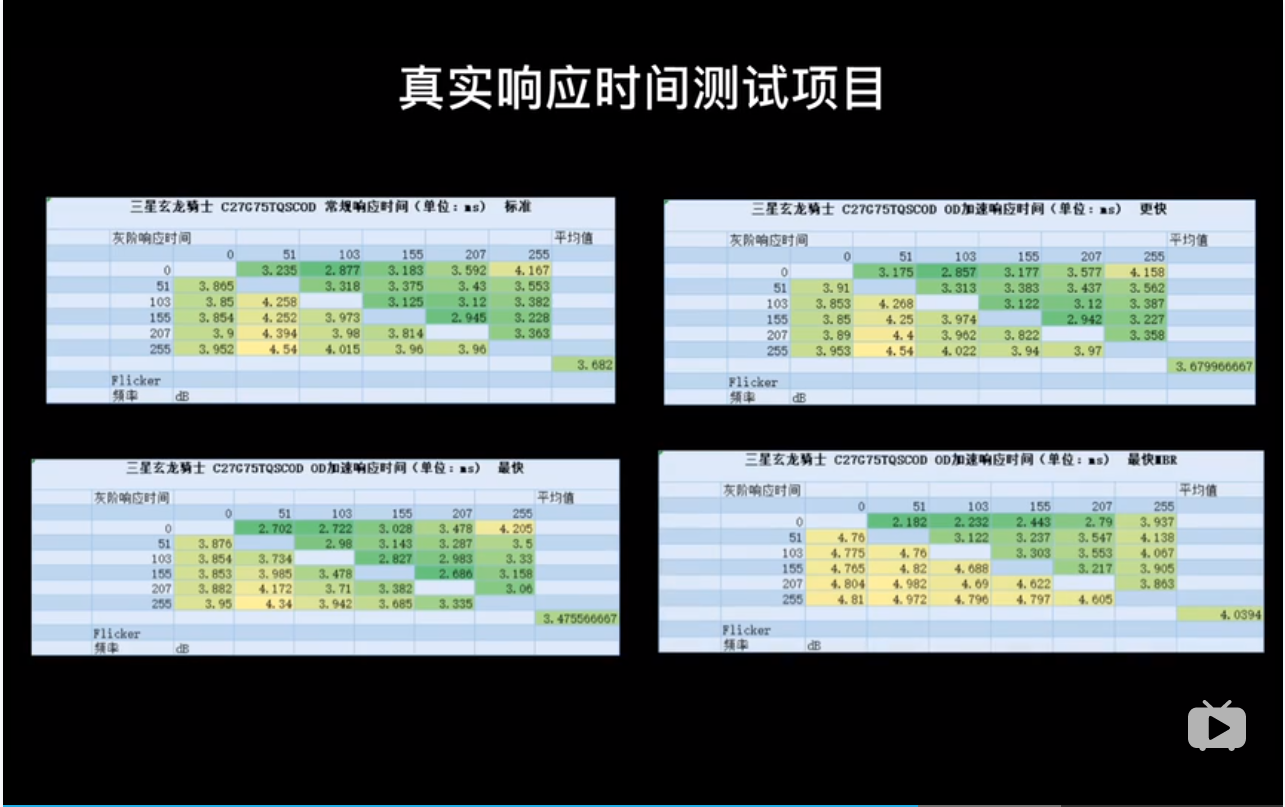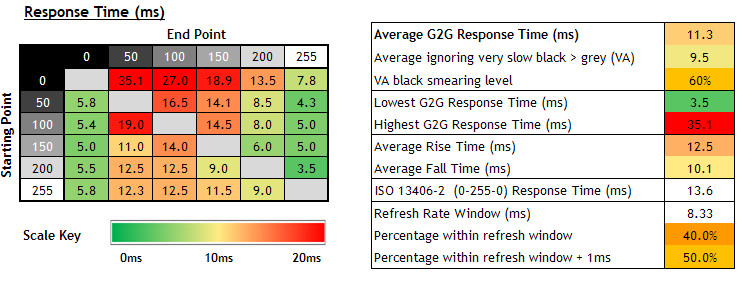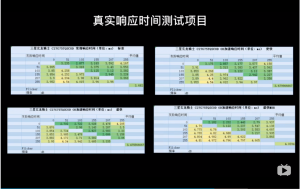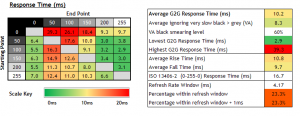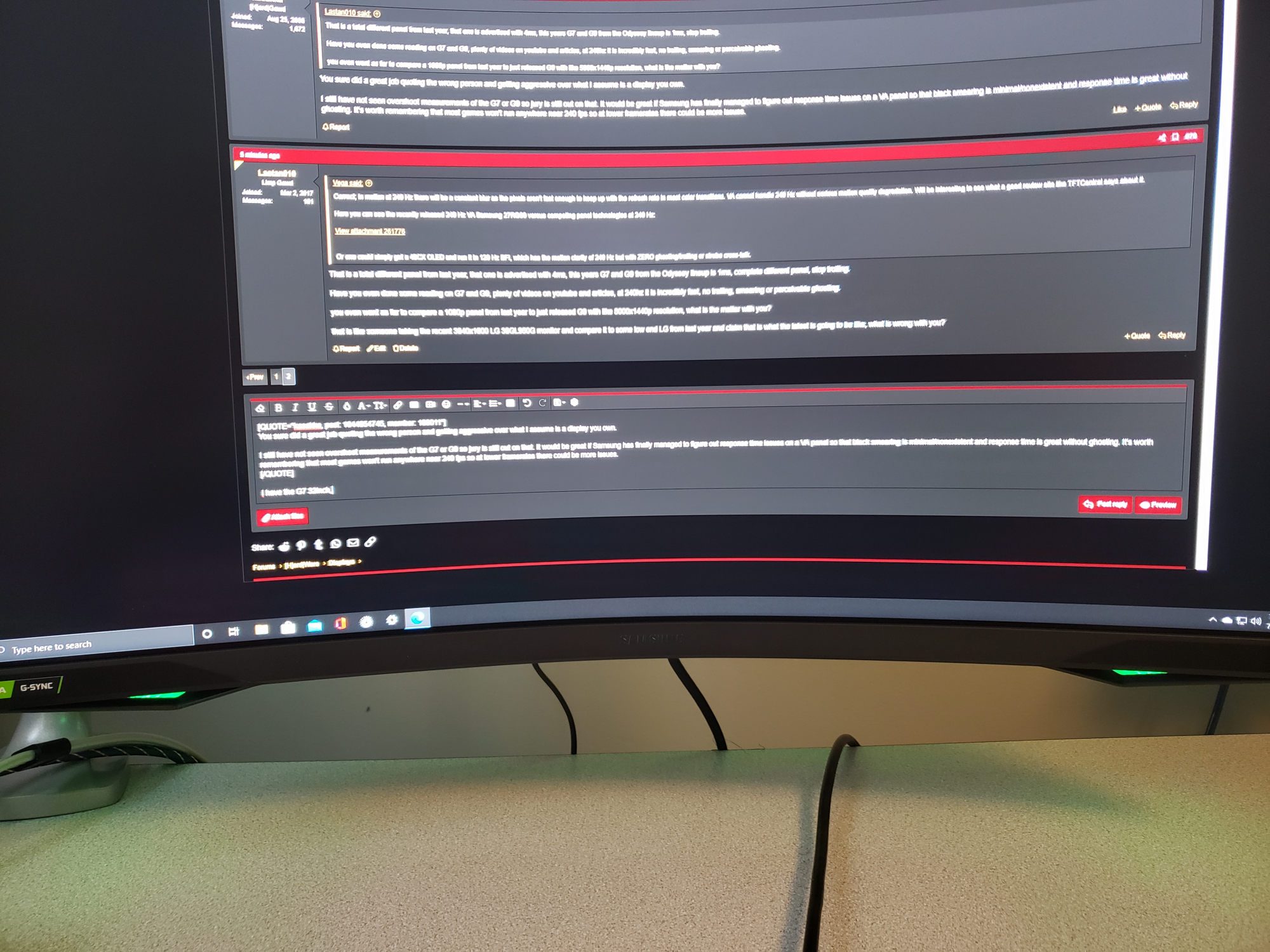Then you more or less know what to expect. Good
I would not expect major improvements in LCD technology as progress in it seems to have stopped as much as ten years ago. There was progress in backlight and control circuitry but generally LCD matrices are exactly the same as they were say 10 years ago.
On VA from one of nice tricks that was used before and is not anymore is pre-tilting. It works by buffering one frame and rotating sub-pixel opposite to it's desired location first and then to desired location. This especially accelerated transitions from black to darker shades. It was used on most S-PVA panels and probably some S-MVA but here I am not sure. I had Dell 2407wfp with this technology and it almost completely lacked any dark streaks I had on latter VA panels without pre-tilting. With ability to refresh whole screen at 4ms I could see it being kinda feasible to implement it assuming limit of 120fps. In best case scenario it could only add 6ms of input lag by starting pre-tilting exactly at the same time GPU sends middle line. It would finish drawing actual frame just before GPU (if it operated at 120fps) was about to drawing middle line of next frame so the whole process could just repeat. I would however not hold my breath over such feature and especially on the idea that they would implement it correctly
I agree that LCD seems like it's coming to an end, with larger Korean manufacturers leaving LCDs to cheap Chinese factories and focusing on OLED and Micro-LED tech. For the next few years I would expect we will see cheaper Mini-LED backlights on LCDs which should help at least give us better HDR monitors.
That pre-tilting sounds like a pretty novel solution to the problem. Samsung does have probably the most advanced VA panels on the market so you would think they know all the tricks, but most likely have just kept improving the response times of their panels over time to the point where they feel they don't need more advanced tricks like this.
I expect the G9 will be a very iterative version of the CRG9. The CRG9 has a pretty conservative response time with no overshoot in any of its modes so they can just rework those to improve the situation. I am not expecting it to perform miracles and that 240 Hz refresh rate very likely won't work so well when the panel can't keep up. But I would reasonably expect this to be say a good 144 Hz panel and there aren't exactly any other options in this form factor. You're going to need that 3080 Ti to push high framerates anyway, probably the reason why I don't run into response time issues much is my 2080 Ti can't push much more than 100 fps on most games I play.
![[H]ard|Forum](/styles/hardforum/xenforo/logo_dark.png)

